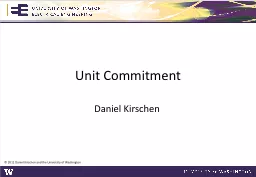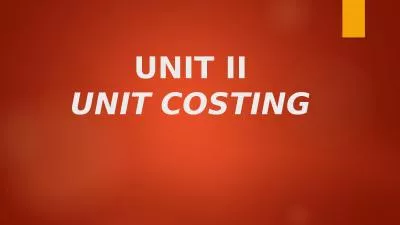PPT-Unit Commitment
Author : stefany-barnette | Published Date : 2015-09-29
Daniel Kirschen 2011 Daniel Kirschen and the University of Washington 1 Economic Dispatch Problem Definition Given load Given set of units online How much should
Presentation Embed Code
Download Presentation
Download Presentation The PPT/PDF document "Unit Commitment" is the property of its rightful owner. Permission is granted to download and print the materials on this website for personal, non-commercial use only, and to display it on your personal computer provided you do not modify the materials and that you retain all copyright notices contained in the materials. By downloading content from our website, you accept the terms of this agreement.
Unit Commitment: Transcript
Download Rules Of Document
"Unit Commitment"The content belongs to its owner. You may download and print it for personal use, without modification, and keep all copyright notices. By downloading, you agree to these terms.
Related Documents












